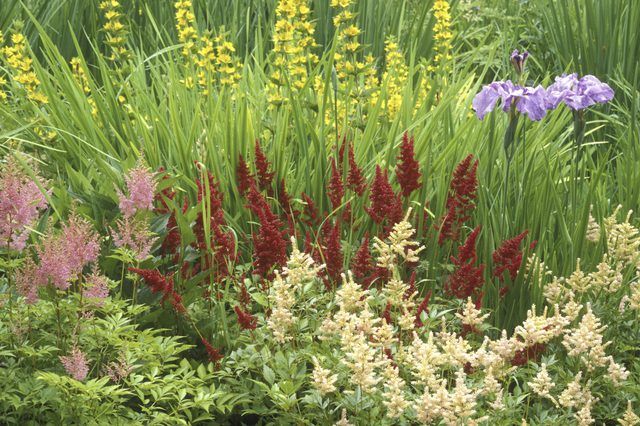Bulbs
Flower Basics
Flower Beds & Specialty Gardens
Flower Garden
Garden Furniture
Garden Gnomes
Garden Seeds
Garden Sheds
Garden Statues
Garden Tools & Supplies
Gardening Basics
Green & Organic
Groundcovers & Vines
Growing Annuals
Growing Basil
Growing Beans
Growing Berries
Growing Blueberries
Growing Cactus
Growing Corn
Growing Cotton
Growing Edibles
Growing Flowers
Growing Garlic
Growing Grapes
Growing Grass
Growing Herbs
Growing Jasmine
Growing Mint
Growing Mushrooms
Orchids
Growing Peanuts
Growing Perennials
Growing Plants
Growing Rosemary
Growing Roses
Growing Strawberries
Growing Sunflowers
Growing Thyme
Growing Tomatoes
Growing Tulips
Growing Vegetables
Herb Basics
Herb Garden
Indoor Growing
Landscaping Basics
Landscaping Patios
Landscaping Plants
Landscaping Shrubs
Landscaping Trees
Landscaping Walks & Pathways
Lawn Basics
Lawn Maintenance
Lawn Mowers
Lawn Ornaments
Lawn Planting
Lawn Tools
Outdoor Growing
Overall Landscape Planning
Pests, Weeds & Problems
Plant Basics
Rock Garden
Rose Garden
Shrubs
Soil
Specialty Gardens
Trees
Vegetable Garden
Yard Maintenance
What Is a Herbaceous Perennial?
Herbaceous perennials are any of the thousands of soft-stemmed plants capable of surviving the winter cold in their locations for three year or more years.
In gardening terms, a perennial is any plant with the potential to live for three or more years when grown in the right conditions. A herbaceous perennial is one with a permanently soft, fleshy stem as opposed to a woody stem, which a shrub or tree has.

Cold tolerance dictates a perennial's lifespan. Some herbaceous plants that aren't perennial in cold-winter climates make the list in mild-winter ones. Others, called tender perennials, survive winter only when moved to protected locations or when their food-storing underground parts are lifted and stored for replanting in spring.
Tip
Plants that always complete their life cycle -- sprouting, flowering, setting seed and dying -- in a single growing season are called true annuals.
Cold Tolerance
The U.S. Department of Agriculture's Plant Hardiness Zone Map conveniently divides geographical areas according to their coldest average winter temperature. Herbaceous perennials are marketed with the range of USDA zones they're suited for listed on their labels, with the low zone number being the coldest suitable zone.
Examples of popular and very cold-tolerant herbaceous perennial include:
Hollyhock (Alcea rosea), which is perennial in USDA zones 2 through 10.
Lily-of-the-valley (Convallaria majus), suitable for USDA zones 3 through 8. This plant can become invasive; either grow it in a pot or surround it with a root barrier to prevent it from spreading.
Columbine (Aquilegia canadensis), perennial in USDA zones 3 through 8.
These familiar plants behave as herbaceous perennials in mild-winter climates:
Snapdragon (_Antirrhinum maju_s), which handles winter cold in USDA zones 7 through 10.
Gerbera daisy (Gerbera jamesonii) for USDA zones 8 through 10.
Garden verbena (Verbena x hybrida), perennial only in USDA zones 9 through 10.
Tender herbaceous perennials include canna lilies (Canna spp.) and dahlias (Dahlia spp.) With protection or lifting, they're hardy in USDA zones 7 through 10.
Tip
Grow the tender perennials in containers and move them to a sheltered location, such as an enclosed porch or unheated garage, for the winter.
Freeze Effects
The first cold damage of the growing season occurs during a light freeze, with the temperature 29 to 32 degrees Fahrenheit. A light freeze kills tender annual flowering plants, vegetables and herbs but has little effect on perennials.
In a moderate freeze, the temperature falls to 25 to 28 F, killing all annuals and freezing the tops of some perennials. Ice crystals forming in the frozen tissues block the flow of water. So the damaged areas appear saturated before shriveling and blackening.
A hard freeze, with the temperature dipping to 24 F or lower, kills hardy herbaceous perennials back to the soil. Their roots or crowns -- the dense stem tissue just above the soil line -- survive and resprout in spring.
Perennial Reproduction
One advantage many herbaceous perennials have over annuals is that their flowers and seeds aren't responsible for guaranteeing the survival of their species. Many of them also spread by above-ground horizontal stems, or stolons. Examples include:
Garden strawberry (Fragaria x ananassa), hardy in USDA zones 2 though 11, depending on the variety.
Creeping saxifrage (Saxifraga stolonifera), sometimes called strawberry begonia and strawberry geranium; hardy in USDA zones 6 through 9.
Hens and chicks (Sempervivum tectorum), succulent plants hardy in USDA zones 3 through 8.
Some perennial bulb plants reproduce by manufacturing bulblets, or naturalizing. Common naturalizing bulbs include crocuses (Crocus spp.), suitable for USDA zones 3 through 8, depending on the variety, and grape hyacinth (Muscari armeniacum) and daffodils (Narcissus spp.), both hardy in USDA zones 4 through 8.